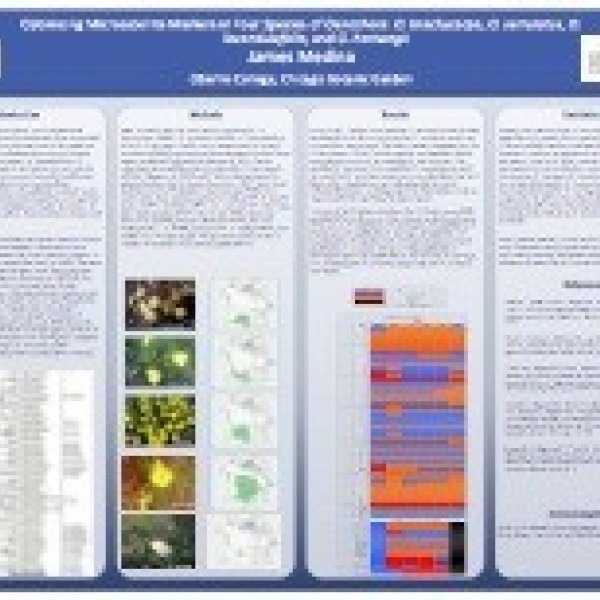
Development of Molecular Markers for studies in Oenothera genus 2013
Chicago Botanic Garden
Genetics
Neutral genetic diversity within plants is often used to track important evolutionary processes including gene flow, species and population divergence, and evolutionary ancestry. Microsatellite primers are a useful way to quantify genetic diversity and track gene flow. In order to measure genetic diversity among these species, we need to first find marker regions that amplify consistently for each species. It is common for primers that target conserved regions to work across closely-related species (Barbara et al. 2007). The more closely related two species are the more likely they are to share these same microsatellite regions. (Barbara et al. 2007) All five species tested here belong to the evening primrose family, Onagraceae (tribe Onagreace). Oenothera biennis is in the section Oenothera, which is distantly related to the sections Pachylophus (containing O. harringtonii), Megapterium (containing O. brachycarpa), and Calylophus (containing O. serrulatus, O. lavandulafolia, and O. hartwegii).(Levin et al. 2004). Due to the position of each species in the most recent phylogeny (Levin et al. 2004) we expect primers developed for O. harringtonii to amplify in O. brachycarpa, O. hartwegii, O. serrulatus, and O. lavandulafolia more often than primers developed for O. biennis.


